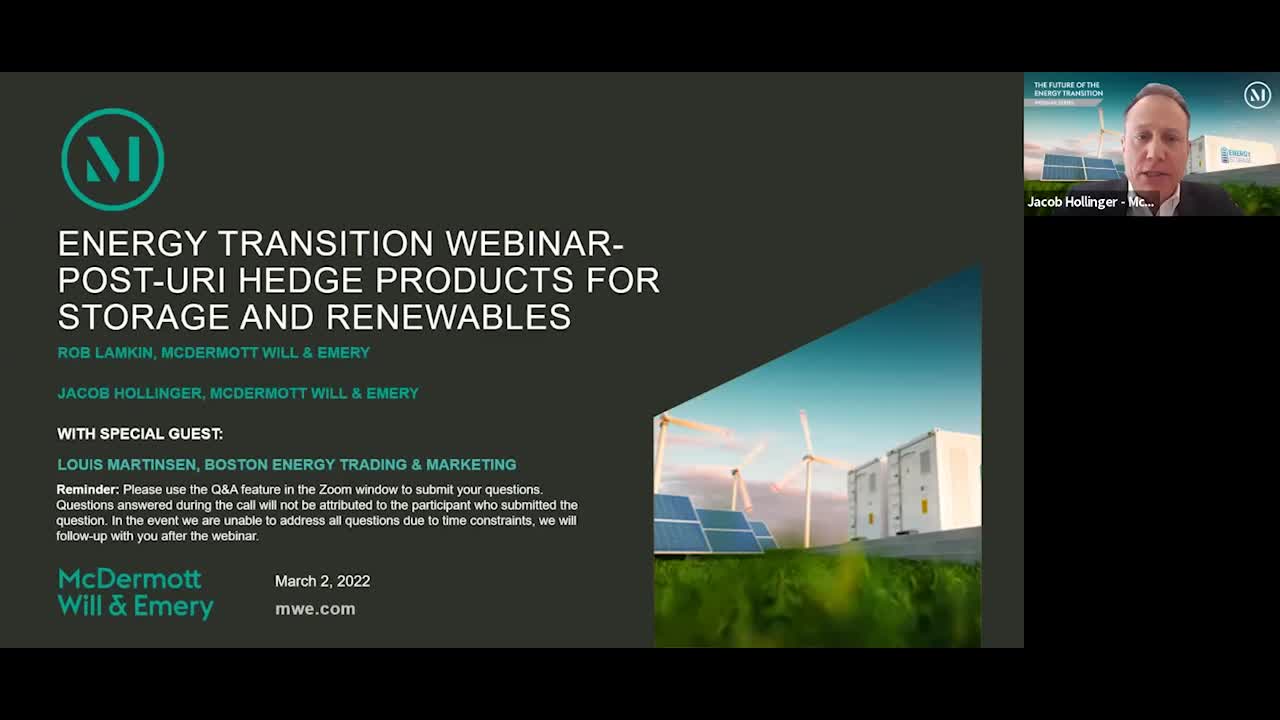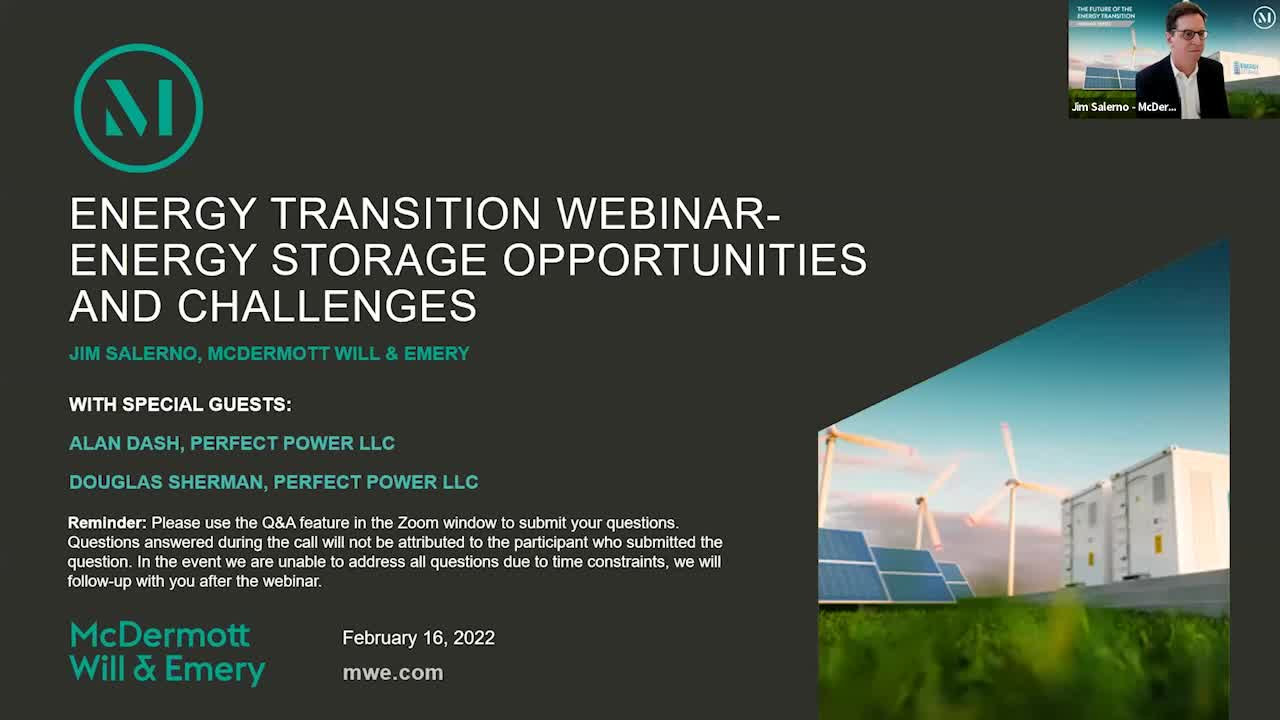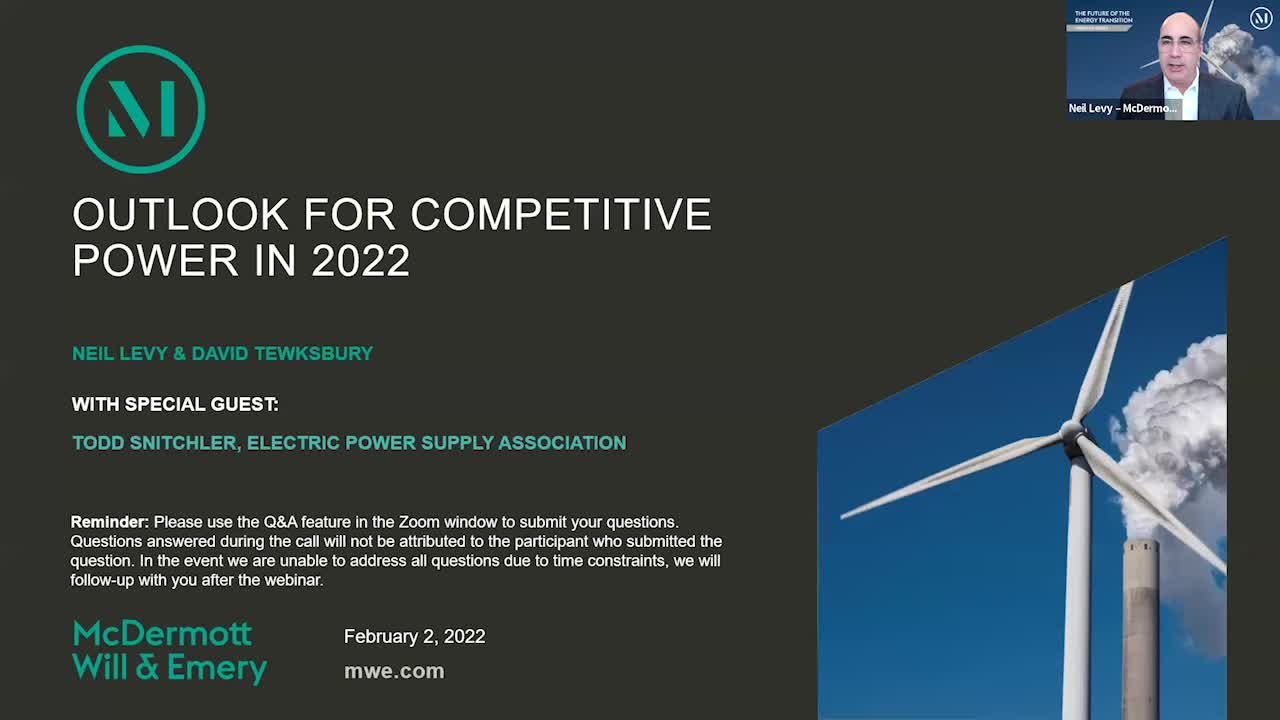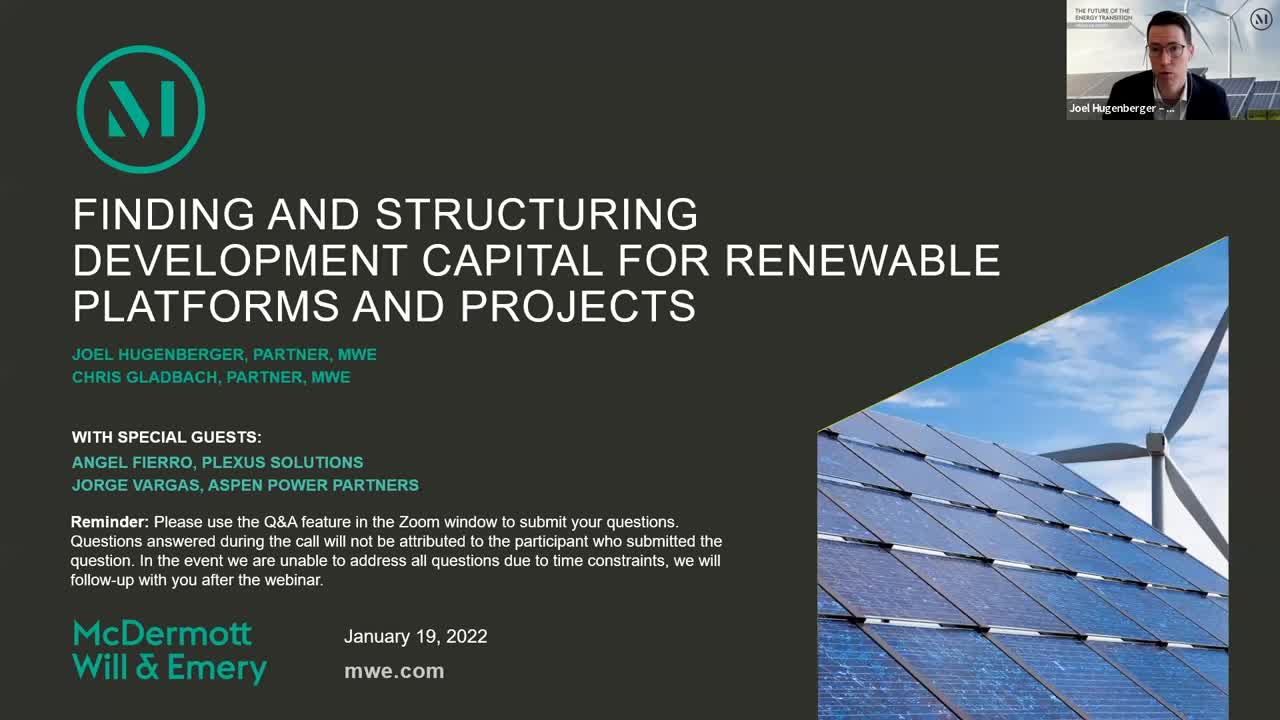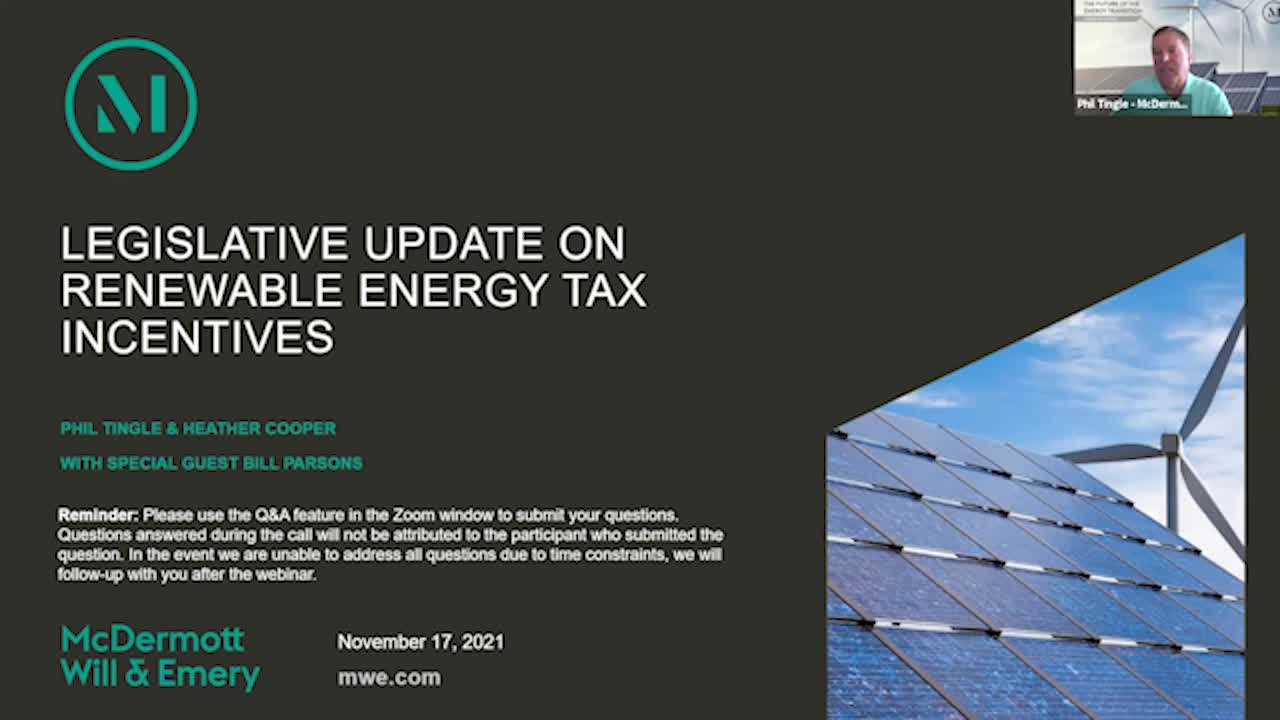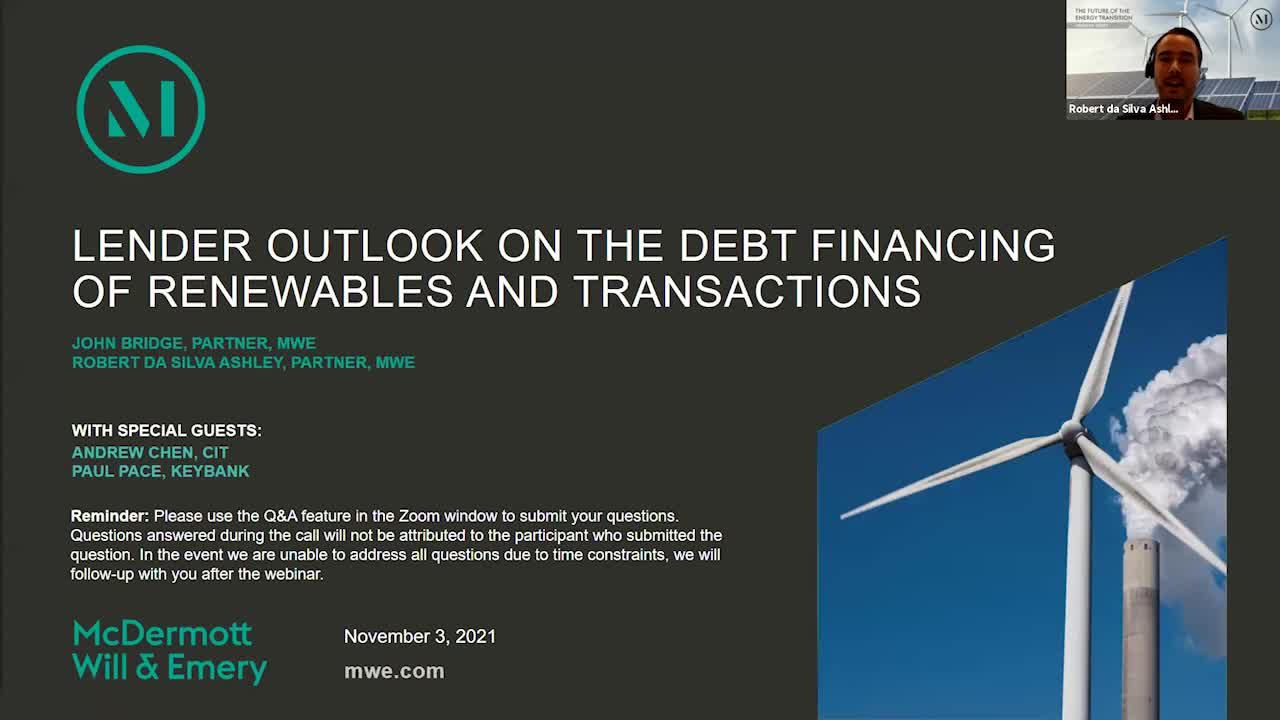Carl Fleming, a partner in McDermott’s Energy and Project Finance Practice Group and head of its energy storage team, hosted a panel of industry leaders from KKR & Co. Inc., CohnReznick Capital and Pine Gate Renewables that explored the opportunities and challenges currently facing the energy storage market, as well as the future of the market. Below are key takeaways from the discussion:
1. Valuation: The models underlying energy storage projects are complex, consist of a large number of variables and are mainly reliant on third-party data and analytics in an emerging technology. In uncertain times like now, it is critical that storage teams be extremely thorough in their diligence and flexible in their approach to valuations and developing the revenue stack for these projects.
2. Supply Chain Woes: Supply chain issues have altered the outlook of many in the storage sector in 2022. While demand remains robust, the storage sector is facing global supply chain issues (as is the entire industry) and competition within manufacturers as to whether cells will be allocated for storage or electric vehicles (EV). The accelerated growth of the EV market could negatively impact the growth of the storage market—unless suppliers find ways to ramp up production.
3. Buy or Wait: Right now, the cost of modules, cells, commodities and transportation are through the roof. At the same time, the demand for storage is equally high. It remains to be seen whether purchasing storage assets at a time of such volatility will be a winning or losing proposition. Some have speculated that now is the time to buy, while others have suggested staying on the bench for this round. However, based on the higher cost of solar assets from years ago and recent prices for the sale of those assets, it seems sitting out in this market would be a losing proposition.
4. Assets vs. Human Capital: In several transactions, we’re seeing parties more interested in acquiring the human capital and the team behind a platform of assets rather than acquiring the asset solely on its economic merits. The track record and make-up of the development team remains an essential point when buyers are considering the projects they are willing to purchase.
5. Standalone, Hybrid or Conversion: Although certain buyers are targeting a particular area of the energy storage market and standalone storage remains a hot topic, the industry as a whole has ready and willing buyers for all forms of energy storage projects (e.g., standalone storage, storage plus renewable hybrids, storage plus conventional hybrids).
6. Market FOMO: There is a pervasive sense of “FOMO” in the market right now. However, developers and investors need to remain disciplined and stay true to two essential prerequisites for a project to be purchased: line-of-sight on interconnection and line-of-sight on offtake revenues. These can be easy to lose sight of in today’s frothy market and in new markets that have shifting regulatory regimes for storage.
Carl Fleming and his team of energy [...]
Continue Reading
read more

 Subscribe
Subscribe